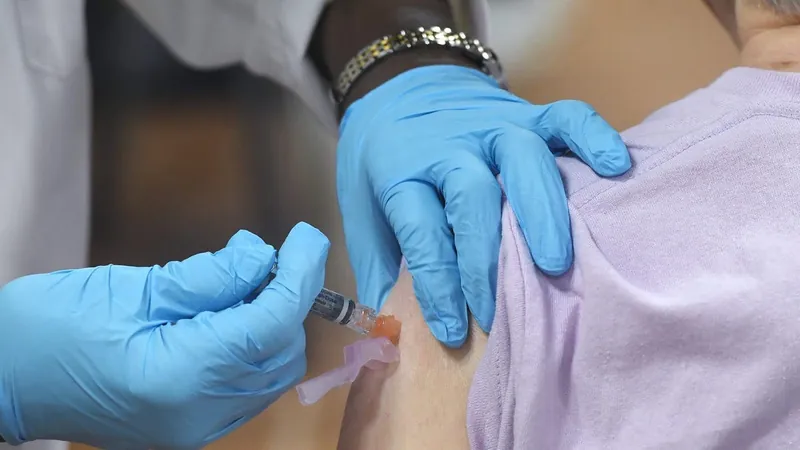
Uncovering the Alarming Rise in Breast Cancer Among Women Under 50: What You Can Do to Protect Yourself
2024-10-08
Author: Lok
A concerning trend is surfacing as breast cancer rates among women under 50 continue to rise, bringing with it a pressing need for awareness and preventive measures. A recent report from the American Cancer Society highlights a troubling increase of 1.4% each year from 2012 to 2021 within this demographic. Particularly alarming is the revelation that Asian American and Pacific Islander women have experienced the most significant growth in rates, with an annual increase of 2.5% to 2.7% since 2000.
Dr. Jon LaPook, CBS News' chief medical correspondent, sheds light on the possible factors driving this rise. He notes that many of these cases involve breast cancers that are fueled by estrogen. "Researchers have observed that young girls are starting their menstrual cycles earlier, while women are delaying childbirth. More menstrual cycles lead to more estrogen surges, potentially leading to increased cancer risks," Dr. LaPook stated during a segment on "CBS Mornings Plus."
Obesity is another critical factor in the rise of breast cancer. An enzyme called aromatase, found in fat tissue, converts testosterone into estrogen, leading to elevated levels of estrogen in the body, further driving cancer risk.
Furthermore, Dr. LaPook discussed the impact of alcohol consumption, highlighting a recent surge in binge drinking among women in their 30s and 40s. He pointed out that approximately 16% of all breast cancer cases are associated with alcohol intake. This alarming trend is a call to action for women to evaluate their drinking habits, as moderation may significantly affect their health.
The specific reasons for the sharp increase in breast cancer rates among Asian American and Pacific Islander women remain unclear. Dr. LaPook emphasized that while this group previously had a lower risk, the rates have escalated to match those of White women. Ongoing research at UC San Francisco aims to uncover the underlying causes of this increase, along with addressing the disparities faced by Black women, who also experience significant outcome inequalities.
In response to cancer disparities, the American Cancer Society launched the VOICES of Black Women study earlier this year, targeting over 100,000 Black women across the U.S. This initiative is vital for understanding the complexities of cancer risk and outcomes among different demographics.
Despite the worrying trends, there is some encouraging news to report. Over the past 33 years, there has been a remarkable 44% decrease in breast cancer mortality, equating to over 500,000 lives saved. This positive shift is largely credited to advancements in early detection and treatment, allowing more women to survive this battle.
However, it is essential to recognize that not all women are reaping the benefits of these advancements. Native American women, for instance, have not seen a decrease in breast cancer mortality, highlighting the persistent gaps in healthcare equity that need to be addressed.
With rising rates and significant disparities, it is imperative for women to take proactive steps toward reducing their risk factors, including maintaining a healthy weight, limiting alcohol consumption, and prioritizing regular screenings. By staying informed and vigilant, women can empower themselves in the fight against breast cancer.


 Brasil (PT)
Brasil (PT)
 Canada (EN)
Canada (EN)
 Chile (ES)
Chile (ES)
 España (ES)
España (ES)
 France (FR)
France (FR)
 Hong Kong (EN)
Hong Kong (EN)
 Italia (IT)
Italia (IT)
 日本 (JA)
日本 (JA)
 Magyarország (HU)
Magyarország (HU)
 Norge (NO)
Norge (NO)
 Polska (PL)
Polska (PL)
 Schweiz (DE)
Schweiz (DE)
 Singapore (EN)
Singapore (EN)
 Sverige (SV)
Sverige (SV)
 Suomi (FI)
Suomi (FI)
 Türkiye (TR)
Türkiye (TR)